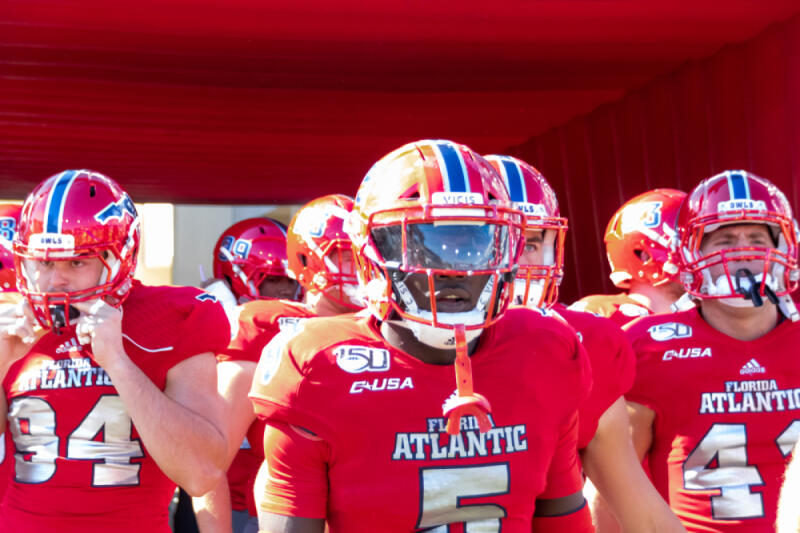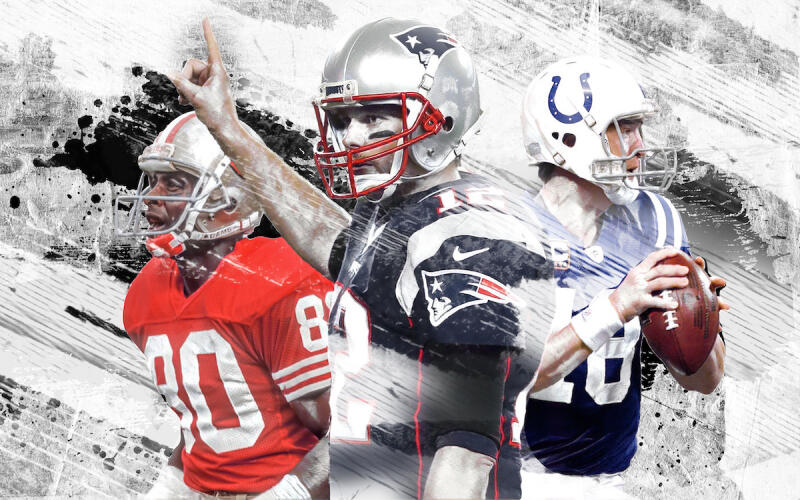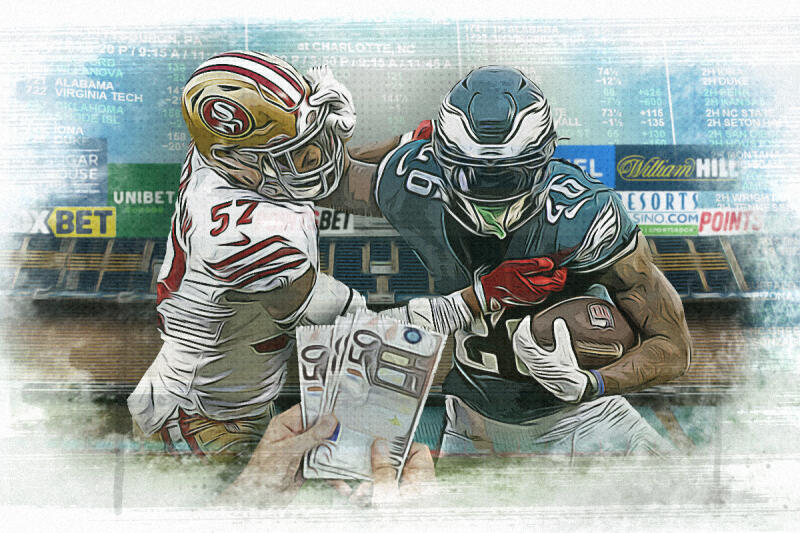How to Bet on Horse Races – A complete beginners guide to Horse Betting
With the explosion of sports wagering, betting on a horse race may be overlooked, but should not be. For centuries, the “Sport of Kings” was the only legal sport to bet on. There are numerous ways to place a bet on a horse race.
With the ease and flexibility of betting horse racing online in 2023, you could see your bank account swell with dividends.
Factors to Consider When Betting on Horses
Reading a program can be daunting for a newcomer to horse racing, but betting on a horse is not as challenging as it may appear. One of the most exciting things about horse race betting is that it is not so simple to always pick the winner. It can be an intellectual pursuit. There are many variables to consider when you bet on a horse including the trainer, jockey, post position and track, as well as distance the horse is competing over.
Many people consider the horse itself and its rider, known as a jockey, as the most essential components in selecting a winner when betting on a horse race. The trainer, however, is just as important as the duo actually on the track.
The Trainer or Conditioner
A trainer that captures many victories and rakes in purse money should always be respected. But other trainers that do not possess large stables or fame in the sport should not be ignored when it comes to betting on a horse race. Some trainers may be just beginning their careers and may not have a large number of horses in their care, while other trainers may only focus on young horses or specialize in turf racing.
An example of this is trainer Wesley Ward, who is known in the industry for doing well with 2-year-olds in stakes and over short distances. Someone like Todd Pletcher is known for preparing all horses for all distances and is particularly successful in stakes races.
When reviewing a trainer’s statistics, bear in mind what type of horses and over what surfaces they have the highest strike rate with. It is essential to keep this in mind when placing a bet on a horse race.
Post Position
Unlike Europe, tracks for horse racing in North America are left-handed and horses run on dirt as well as turf. Where a horse draws does hold some sway. For instance, in the Kentucky Derby, which is the largest field of any race with 20 potential starters, we prefer a horse that does not draw the rail or the far outside post.
The rail forces a horse to be hard used early, while the outside posts place a horse in a position where they could be carried wide the entire way around the track and lose valuable ground to a rival.
The Rider
The best jockeys in horse racing usually ride the best horses. Although they all have their own unique riding style, jockeys generally ride their horse to the best of the horse’s ability. Some jockeys ride exclusively for certain trainers, like Hall of Famer John Velazquez riding what is referred to as “first call” for Hall of Fame conditioner Todd Pletcher. Sometimes a jockey will pick up a mount or be asked to ride a horse due to how they develop a relationship with them.
For example, last year’s Kentucky Oaks winner, Secret Oath, has raced with a number of different jockeys, but 10-time Churchill Downs leading rider Tyler Gaffalione appears to suit her best.
Also, some jockeys excel on dirt or ride more patiently on turf. The now-retired Brice Blanc rode well on the turf regardless of the horse, and even with high odds, was worth a bet.
The Horse
The horse itself must be taken into consideration. When you are handicapping young horses that do not have a lot of experience, you should review how successful the trainer is with young horses. The horse’s pedigree is also important. What did their sire and dam (father and mother) accomplish on the track? Are they bred to want a distance of ground or to sprint? Was their family successful early on or did they take time to develop?
A horse with a sprinter’s pedigree or grass breeding would not enter the Kentucky Derby. They would remain in sprints or on the turf.
Also, there are different classes or conditions that should be kept in mind for horse racing betting. The top or elite horses compete in stakes races like the Kentucky Derby and Breeders’ Cup where the best horses in the world face one another. Horses that do not have the ability to match strides with the most talented horses drop down into classes that suit their ability.
These conditions include allowance races and claiming races gradually decreasing in purse size depending on the ability of the horses in the field. Claiming races are contests where a horse can actually be purchased by another trainer and owner for a specific price.
Therefore, if you see a horse that has jumped up in class or dropped in class, examine their recent form. It is extremely useful knowledge in horse race betting because horses that are switching levels are often valuable wagers.
Types of Horse Racing Wagers
People have been placing straight wagers on horses since they began racing in North America in the 1660s with a simple, “If my horse is faster than yours, I will receive x amount of dollars.”
In horse racing betting, the public has three paths to place a basic or straight wager. Those bets are called Win, Place and Show. Traditionally, these wagers were only available for a $2 minimum but in recent years many tracks now offer a $1 minimum straight wager.
Betting to Win
This is as easy as it gets in horse racing betting. All it means is betting your horse to hit the wire in front of its rivals. As with all wagers there is what is referred to as a takeout rate or house cut. Like a casino, a racetrack extracts a certain sum to contribute to its operations. For a win bet, this is usually 15-20% depending on the track, the state the track is located in and what type of arrangements the track has for television coverage.
A win bet is the most common and simplest form of wagering. It is often the first wager many newcomers to horse racing betting employ when they enter the game.
To explain how a win bet works, say the No. 2 horse is the favorite in a field of nine at 8-5. If the horse is victorious, a winner would net $1.60 for each $1 that was bet, in addition to what was initially placed. Therefore, the return would be $5.20 for a $2 wager.
Although the win bet is the simplest to place, its level of difficulty compared to other straight wagers is higher. Since favorites typically win races 30% of the time, a bettor would generally win every third time they placed a win bet on an entire race card. Obviously, this decreases if a bettor wagers on horses that have higher odds.
Betting to Place
A place bet in horse race betting means a horse must finish first or second. The level of difficulty is easier than a win bet because a bettor wins if a horse occupies the top two spots rather than just one.
With a place bet the payouts are not as large because the risk is mitigated. Also, odds and payoffs are determined after the order of finish is established so they are not readily available to bettors. They can be ascertained with calculations, but a newcomer to the sport should not sweat it and just enjoy cashing their winning ticket.
Betting to Show
A show bet is the simplest way to collect some cash in horse racing betting as it merely means your horse has to finish first, second or third. Since it is the least difficult of the three straight wagers, the pool is separated between three groups of bettors for each position the horse may finish. That’s why the payouts for show wagers are typically not very large.
Like place wagers, odds and payouts are not available until the order of finish is official. Show wagering is an excellent way for people new to horse racing to get their feet wet, but it also provides the least-lucrative payouts.
There is also a wager referred to as “across the board.” In horse racing, this means betting on a horse to finish first, second or third. This is a great wager for those new to horse racing but like a show bet also generally provides a low return unless horses with long odds hit the wire in those positions.
Examples of Payouts for Straight Wagers
| $2 Win on No. 1 | $7.40 |
| $2 Win on No. 4 | $0 |
| $2 Win on No. 3 | $0 |
| $2 Place on No. 1 | $4.00 |
| $2 Place on No. 4 | $12.80 |
| $2 Place on No. 3 | $0 |
| $2 Show on No. 1 | $2.80 |
| $2 Show on No. 4 | $9.20 |
| $2 Show on No. 3 | $6.20 |
What is an Exacta?
Any wager that is not a straight wager is considered an “exotic” bet. One of the more popular options is an exacta. In horse race betting, this means a bettor must select two horses to finish first or second in that exact order.
For instance, if you think No. 6 horse will win easily and the No. 7 horse is better than the rest in a field of 10, then it would be a 6-7 exacta. What most players do, however, is box the exacta. That simply means you pay an additional sum, such as $2 for each horse, so that if the No. 7 horse wins and the No. 6 horse finishes second, you still win.
Exactas are considered the least complex of all the exotic wagers.
What is a Trifecta?
In horse racing betting, a trifecta is when the bettor attempts to select the exact order of finish for first, single and third in a single race. It’s a bit more difficult than an exacta but still remains a top choice for horse players.
If a bettor thinks the No. 3 horse will win, the No. 5 horse will come in second and the No. 6 horse will come in third, they could place a $1 down on each spot (if a $1 trifecta is available at that facility). The horses must finish in that exact order for a winning ticket. Payouts are usually quite nice depending on the odds of the horses after leaving the starting gate.
Some horse players will construct trifecta wagers with a number of horses in the same contest. For instance, if there is a 10-horse field, a bettor could select several different combinations for a winning ticket.
Other players make it a bit more complicated and will “key” a horse, meaning that horse is bet as the winner but a number of other horses in the field are used “underneath” to come in second or third.
If a bettor thinks the No. 2 horse and the No. 7 horse are the winners, but also thinks the No. 5 horse and No. 6 horse will hit the board in second or third, he or she would wager a $1 trifecta with 2,7 on top then 5,6 underneath. The ticket would look like 2/7/5/6.
The ticket would be a winner if the No. 2 or No. 7 horse wins. The non-winner would then have to hit the board with the No. 5 and No. 6 horses.
Like an exacta bet, there is a trifecta box. It is the same premise with picking the top three finishers. They can finish in any order for a winning ticket.
What is a Superfecta?
In horse race betting, a superfecta emulates an exacta and trifecta except a bettor can select the first four finishers in a race. This wager in horse racing betting is not as popular as an exacta or trifecta, but they can provide big payouts. Like exactas and trifectas, superfectas can also be boxed but it can get quite pricey for a novice bettor. Especially if you key a horse or horses and then use the field underneath.
Many tracks offer the superfecta for $0.10, which makes the bet more affordable. It becomes $24 for a superfecta box and on many occasions, even with favorites coming in, a bettor can win $100 or more for a relatively-low investment.
How Do Horse Racing Odds Work?
Horse race betting incorporates a parimutuel system in North America. It sounds fancy since it was derived from a French term, but it’s not. What it means is all the money that is wagered on a race is placed in a pool. The amount of money wagered on each horse is how their odds to win are constructed. So, if the horse on the rail (post position No. 1) has the most money wagered on it to win, it will be the favorite.
Also, the pool is divided among the bettors and the track. The track’s slice of the pie is referred to as takeout and the winnings from wagers are returned to bettors after the facility subtracts that sum.
Parimutuel systems differ from fixed wagering where a bettor places a wager on a horse, and they receive those odds. In the parimutuel system, odds change right up until the minute horses enter the gate depending on the money that continues to come in on the horse.
If a horse is withdrawn from a contest prior to the running of the race, it is known as a “scratch.” The bettor will have all funds returned if that horse does not make it into the gate to compete.
Kentucky Derby 2024 Betting: Everything You Need
Known as the “Run for the Roses,” the Kentucky Derby is a Grade I stake contest nearly every Thoroughbred owner, trainer or jockey dreams of capturing. Always conducted on the first Saturday in May at Churchill Downs in Louisville, Kentucky, the Derby is one of the most-coveted contests in the world. The race features 3-year-olds running 1.25 miles, with each horse carrying 126 pounds. Fillies receive a several-pound weight allowance at 121.
Churchill Downs can accommodate a field of 20 horses. A horse’s position in the starting gate is determined by a points system called the “Road to the Kentucky Derby.” Horses compete in certain stakes races and collect points based on their finish position starting late in the season of their 2-year-old year.
The 20 horses with the most points or wins, placings etc. in the selected stakes events gain entry into the race.
Worth $3 million, the Kentucky Derby is considered to be the “Greatest Two Minutes in Sports,” as it takes roughly that amount of time to complete the event. It is one of the most-watched horse racing events in the world and is also one of the most-wagered on horse races.
Underdogs have performed well in recent years. Last year’s winner, Mage, went off at odds of 16-1 and paid $32.42 to win. In 2022, Rich Strike wore the blanket of roses at odds of 80-1.
The Kentucky Derby is also the opening leg of the American Triple Crown, which includes the Preakness Stakes at Pimlico Racecourse in Baltimore, Maryland, and the Belmont Stakes at Belmont Park in Jamaica, New York.
Only 13 horses have won the elusive Triple Crown in more than a century. The road to greatness begins in Louisville on Kentucky Derby Day.
Additional Factors to Consider When Analyzing Horses
As with everything in horse race betting, there are a number of things to take into consideration when reviewing horses to place a wager on. When a bettor looks at the program they should see how the horse has performed in its last four consecutive races, if the horse has finished first, second or third or if they had an excuse as to why they did not win.
On many occasions, a horse may have broken poorly from the starting gate, compromising its chances right from start. They may also have been in a field that was difficult for them, and perform better with a drop in class. They may also switch barns or receive a jockey change that could improve their performance, or have raced on a sloppy surface or wet turf course that impacted their running style.
Tips for Successful Betting on Horse Races
There are so many options for any player, from the novice to the professional, that are appealing and fruitful.
The best way to immerse yourself in horse racing betting is to attend live racing and see the horses with your own eyes, as well as get a feel for the racetrack environment. If that is not an option, FanDuel TV and the New York Racing Association through their affiliation with Fox Sports offer live racing programming almost daily. Each entity also has their wagering platform offering incentives to sign up and wager.
There are also a number of handicappers known throughout the sport for their expertise. Incorporate all these avenues, concentrate on learning how to read a program and insert your own thoughts into your overall analysis.
Why is Horse Racing Betting so Popular?
People have wagered on horses for centuries and it was the first and only legal form of sports wagering for many years. Horse racing betting can be exhilarating and deflating all in the same day, but it can also be extremely rewarding.
As long as wagerers use their wits, learn the unique aspects of the game and bet responsibly, they will be hooked. Once horse racing betting gets in your blood, it’s impossible not to enjoy the practice and the results.
FAQs
What is a good bet for beginners?
The easiest way is to begin with a win bet.
What’s the best way to bet on horses?
The best way is at the track, but online is also easy.
How do you bet on horses in a race?
You select the number of the horse or horses and decide where they will finish.
What are the different types of horse racing bets?
There are straight bets such as win, place or show, and exotic bets like exactas, trifectas and superfectas.
How does horse racing differ from sports betting?
Horse racing employs a parimutuel model, which is different from the fixed odds setup.
Where is online betting on horse racing legal?
Alabama, Arizona, Arkansas, California, Colorado, Connecticut, Delaware, Florida, Idaho, Illinois, Indiana, Iowa, Kansas, Kentucky, Louisiana, Maryland, Massachusetts, Michigan, Minnesota, Missouri, Montana, Nebraska, New Hampshire, New Mexico, New York, North Dakota, Ohio, Oklahoma, Oregon, Pennsylvania, Rhode Island, South Dakota, Tennessee, Vermont, Virginia, Washington, West Virginia, Wisconsin and Wyoming.
Our editorial content strives to be highly informative and educational to our audience, especially for visitors who are new or relatively new to analyzing and predicting sporting event results. All of our content is created by informed writers with backgrounds in their subject area and reviewed for omissions or mistakes.
Our editorial team is run by individuals with many years of experience in digital publishing, editorial, and content production. Our editorial content is always marked clearly in any instances where it may be sponsored by a third party, though it is still reviewed by our staff to ensure it remains consistent with our company mission.
- Popular
- Latest





